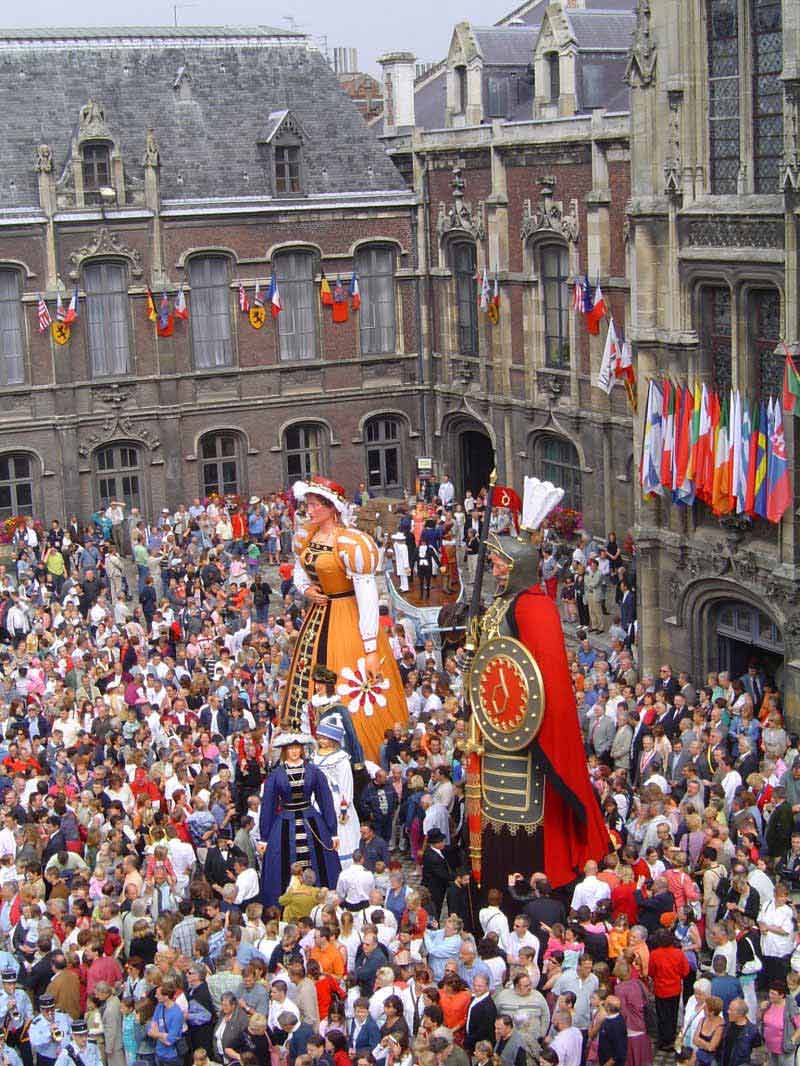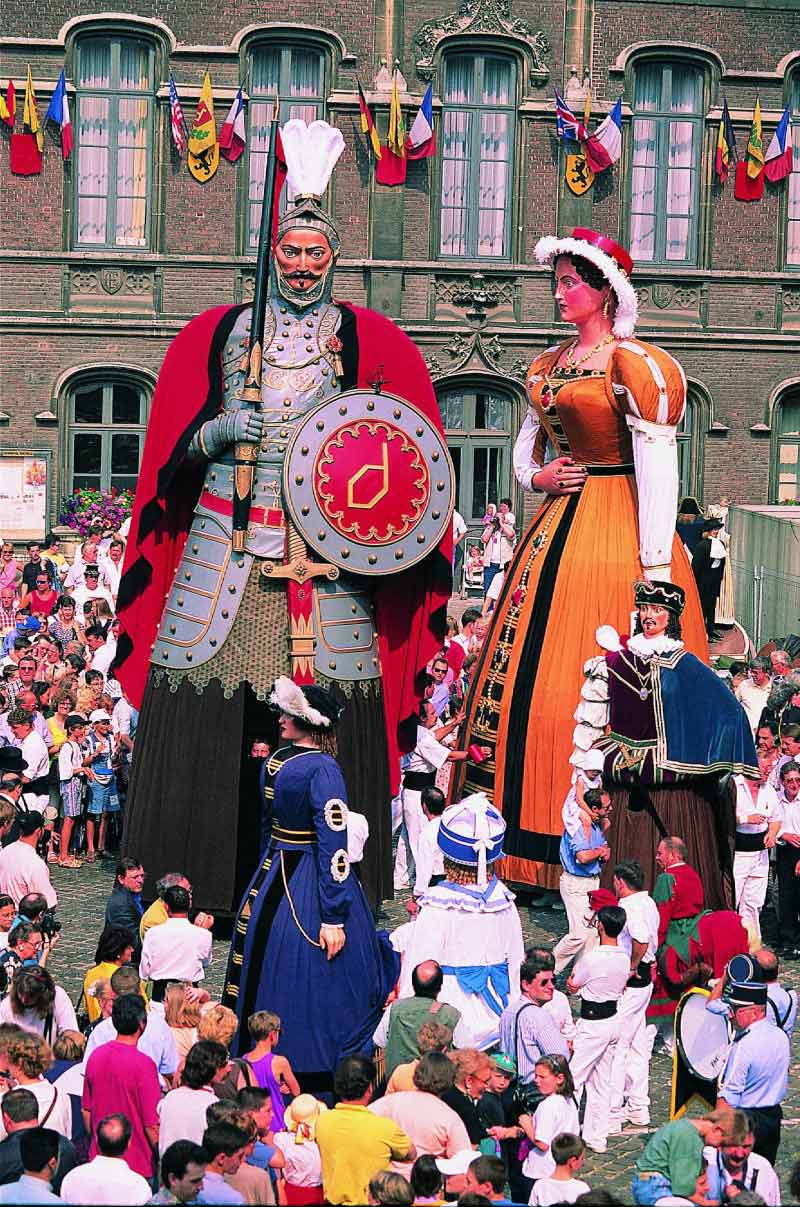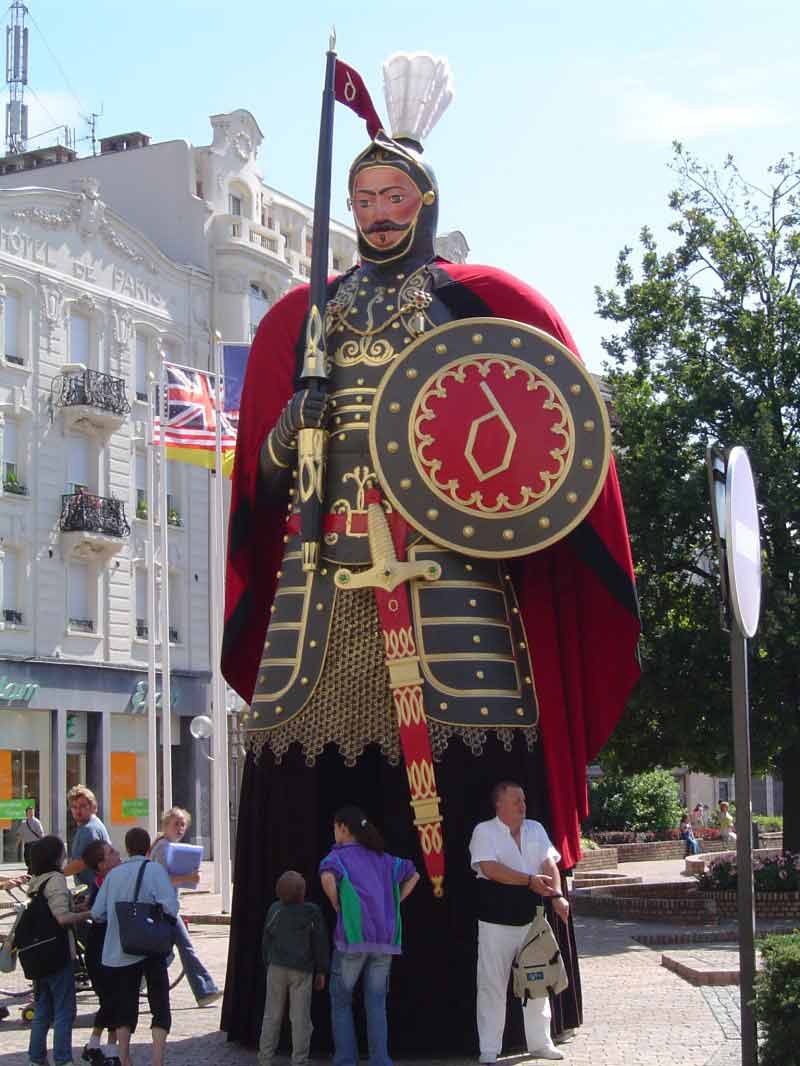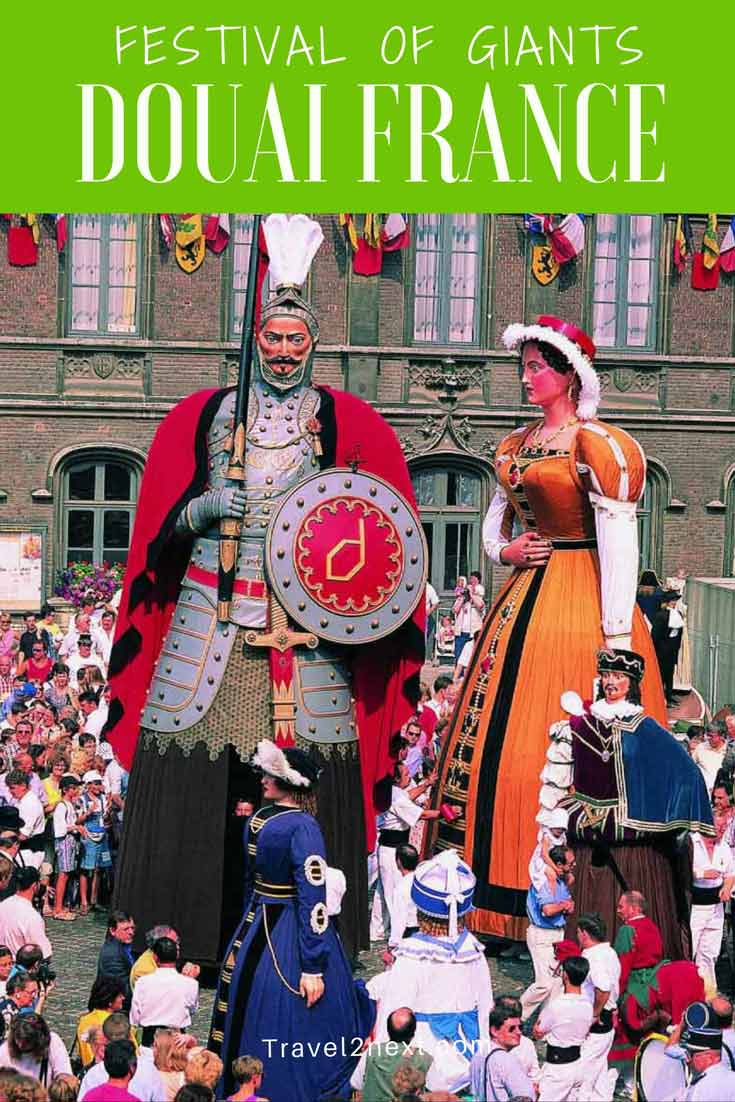Each year, the mythical heroes of Douai come to life in the form of a family of giants.
In the Nord-Pas de Calais region of France, 40km from Lille, the city of Douai celebrates its historical past with a larger-than-life parade of giants. France’s main giant festival is a page out of Gulliver’s Travels. In Jonathan Swift’s tale, Gulliver’s travels take him to Lilliput where he is a giant among the little folk. In Lille, the people of the city parade their giants with pride.
Douai
On the first morning of the festival, after the Lord Mayor’s speech at the Town Hall, pigeons are released; sweets are thrown into the crowd and the brass bands strike up happy tunes. The giants re-enact historical scenes and there’s lots of dancing in the streets.
It’s a festival of the people where the locals spend weeks preparing for the festival. The highlight is a procession where over 100 giant idols representing characters from local legends march through the streets.
Festival of giants
The history of the festival began in the 15th century, when Douai was a part of Flanders. Douai’s patron saint, St Maurand, along with the townsfolk rescued the Count of Flanders and his wife Mary of Burgundy from the clutches of the French.
A pageant was staged to celebrate the victory.
“We have a strong attachment to our giants, whom we see as protectors of our town. It’s a tradition that originated to when the French invaded Flanders, and has been passed down from our forefathers,” says local resident Audrey Avinee.
Years later, in 1530, after a peace treaty was signed with France, the town’s guild of basket-makers constructed a float featuring a wickerwork giant called Gayant (the local word for giant). Gayant was a big hit. Madame Gayant appeared the year after. Two centuries later, their children Jacquot, Fillon and Binbin joined the fray in 1720.
Flanders and France
In 1667, Louis XVI of France invaded Flanders and in line with the 1668 treaty of Aix-la-Chapelle, Flanders became part of France. After Flanders became part of France, the Bishop of Arras banned the parades. By then, the collection of giants had grown to include devils and dragons. Over the next two centuries, the parade came and went. But was again banned during the French Revolution when the giants were seen as symbols of aristocracy. Today, the festival is Douai’s biggest event attracting visitors from all over Europe.
“Visitors are amazed at the spectacle of the giants parading down the street; it’s really a festival put on by the people for the people,” says Avinee. Local companies and social groups take ownership of different giant figures. The giants are in demand as celebrity guests during special events. Weddings among giants are extremely popular. And when an aging figure is replaced, there’s a christening to bless its successor is a big event.
When you take into account
From Spanish soldiers to fools on horses, mythical heroes to animals and legendary characters, Douai’s giants represent symbols that are deeply entrenched within the psyche of the people of Douai.
Worshipping giants
Other cities and towns that were once part of Flanders also maintained the tradition of worshipping giants. They include Ath, Brussels, Dendermonde, Mechelen and Mons in Belgium and Cassel, Pézenas and Tarascon in France. In 2005, the Processional Giants and Dragons in Belgium and France became part of UNESCO’s Third List of Masterpieces of the Oral and Intangible Heritage of Humanity.
The giants are not the only things of historic value in Duoai. The 14th-century Gothic belfry – Beffroi de l’Hôtel de Ville de Douai – has the largest collection of bells in Europe and is part of a group of 55 belfries in France and Belgium that also hold UNESCO World Heritage status. The bells jangle melodiously every 15 minutes and on Saturday mornings, a master carillon provides the town with a delightful bell concert.
History fans will enjoy wandering through the Chartreuse Museum to admire its collection of paintings by Flemish, Dutch and French masters. And sweet lovers will enjoy sinking their teeth into a Gayantine, milk caramel shells filled with a soft butter and vanilla or chicory caramel paste that melt in the mouth.
Discover Douai
The Douai Festival of the Giants is on in July each year.
Blatten Belalp witches festival in Switzerland
Neuschwanstein Castle Germany
The Magical Story of Monaco
Plan Your Trip

Rent A Car – Find the best car rental rates at Discover Cars. They compare car hire companies to provide you with the best deal right now.

Find A Hotel – If you’re curious about this article and are looking for somewhere to stay, take a look at these amazing hotels.





